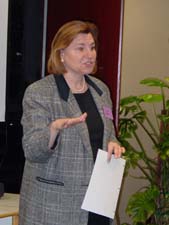Reading Room Search
Go here for complete Reading Room Article Index
Displaying 76 - 100 of 607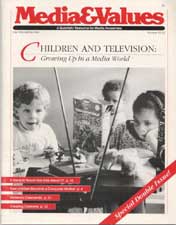
From Saturday morning cartoons to Nintendo, advertising and movies, parents worry about media’s impact on their children. Are their fears justified? How much can parents and teachers influence children’s media use? How did children become a consumer market? What should you know as a parent (or grandparent) about our exploding media environment? What practical --- and positive --- things can you do to make a difference?
“...examines issues of importance for parents, educators and everyone concerned about children today.”
---David Kleeman, American Children’s Television Festival
“...a... Read More
[Editor's Note]: As assistant superintendent in the Mamoroneck , NY school system in the 1970s, Calvert E. Schlick, EdD, championed the idea that understanding media is a basic skill that should be taught consciously. "Anything that equips students to deal with the barrage of information beamed at them by TV is a valid part of the curriculum," he said repeatedly. Under his leadership, television and media were seen as instruments of writing to create with. Instead of the relatively passive medium that children spend watching, television becomes an active experience when the student puts a... Read More
CML Publishes Start-up Curriculum for K-12 Media Literacy
25 Lesson Plans Help Students Explore Five Key Questions of Media Literacy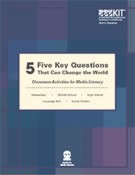
LOS ANGELES, CA, September 30, 2005 – "Where do I start?" is a cry often heard from teachers who would like to introduce media literacy in their classrooms, kindergarten to high school, but lack the tools to do so.
Now, a pioneering leader in media literacy has published a ground-breaking solution that provides an entry point for students of all ages to learn and master the basic principles of the field.
Five Key Questions That Can Change the World, developed by the Los Angeles-based Center for Media Literacy (CML), is an innovative collection of 25 cornerstone classroom activities and lesson... Read More
Five Key Questions Form Foundation for Media Inquiry
Keywords and Guiding Questions help build habits of critical thinking by Center for Media Literacy
In the MediaLit Kit ™, the Center for Media Literacy identifies Five Key Questions as the core of our inquiry-based media literacy pedagogy. Where do they come from? Like so many good ideas that evolve slowly over time, they are simply an innovative recasting of the Five Core Concepts which the early media literacy field adapted, in turn, from traditional categories of rhetorical and literary analysis.
The following chart illustrates the relationship between the concepts and the questions and identifies keywords that crystallize the analytical topic of each pair. Click on each concept or... Read More
CML Pilots Media Literacy Unit for Obesity, Nutrition Education
Students increase nutrition savvy by 16% by Katherine Anderson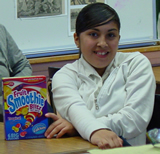
Childhood obesity may be a growing national health crisis but for 19 students at Sepulveda Middle School in Los Angeles, a three-week pilot media literacy / nutrition program in spring 2005, provided them with plenty of food for thought about how media and pop culture image a healthy diet.
Moreover, pre and post test results revealed that the group of 19 young people increased their nutrition savvy by 16%, jumping from 79% to 95%.
What's more, while sharpening their own media literacy and nutrition skills, they also created a teaching tool that enlightened their schoolmates. A... Read More
What is Media Literacy? A Definition...and More.
CML's definition focuses media literacy as education for 21st century. The definition most often cited in the US is a succinct sentence hammered out by participants at the 1992 Aspen Media Literacy Leadership Institute:
… the ability to access, analyze, evaluate and create media in a variety of forms.
Definitions, however, evolve over time and a more robust definition is now needed to situate media literacy in the context of its importance for the education of students in a 21st century media culture. CML uses this expanded definition:
• Media Literacy is a 21st century approach to education.
• It provides a framework to access, analyze, evaluate and... Read More
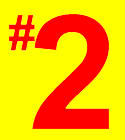
Core Concept #2: Media messages are constructed using a creative language with its own rules.
Keyword: Format
The second Key Question explores the 'format' of a media message and examines the way a message is constructed, the creative components that are used in putting it together -- words, music, color, movement, camera angle and many more. The goal of Key Question #2 is to help students build an internal checklist that they can apply to any media message anytime.
To build this checklist, we have to, first, begin to notice how a message is constructed. Through the activities in this unit,... Read More
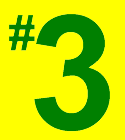
Core Concept #3: Different people experience the same media message differently.
Keyword: Audience
How do audiences interact with the media in their lives? Our bodies may not be moving but in our heads, we're constantly trying to connect what we're hearing, seeing or reading with everything else we know. Key Question / Core Concept #3 incorporates two important ideas: first, that our differences influence our various interpretations of media messages and second, that our similarities create common understandings.
When you think about it, no two people see the same movie or hear the same song... Read More
Key Question #4: What lifestyles, values and points of view are represented in, or omitted from, this message?
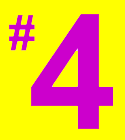
Core Concept #4: Media have embedded values and points of view.
Keyword: Content
In looking at the content of a media message, it is important to understand that there are no value-free media and never will be. All media carry subtle messages about who and what is important.
Because all media messages are constructed, choices have to be made. These choices inevitably reflect the values, attitudes and points of view of the ones doing the constructing. The decision about a character's age, gender or race mixed in with the lifestyles, attitudes and behaviors that are portrayed, the selection of... Read More

Core Concept #5: Media messages are organized to gain profit and/or power.
Keyword: Purpose
With Key Question #5, we look at the motive or purpose of a media message - and whether or how a message may have been influenced by money, ego or ideology. To respond to a message appropriately, we need to be able to see beyond the basic content motives of informing, persuading or entertaining.
Much of the world's media were developed as money making enterprises and continue to operate today as commercial businesses. Newspapers and magazines lay out their pages with ads first; the space remaining is... Read More
Getting Started: Ideas for Introducing Media Literacy in your School or District
Compiled from questions to CML and what we've learned over many years!
1. Start with your best, most enthused teachers.
A single teacher working alone can often feel isolated and become frustrated; working as a team or group provides support and builds motivation.
Middle school is good place to start as collaborative learning and interdisciplinary units are already quite common at middle school level. But any collaborative teaching team in a department or a grade can experiment with introducing media literacy concepts across the curriculum.
Expand the core group with a media librarian and/or curriculum specialist whose job it is to assist teachers in finding... Read More
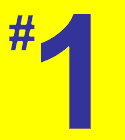
Core Concept #1: All messages are 'constructed.'
Keyword: Authorship
To explore the idea of 'authorship' in media literacy is to look deeper than just knowing whose name is on the cover of a book or all the jobs in the credits of a movie. Key Question #1 opens up two fundamental insights about all media -- "constructedness" and choice.
The first is the simple but profound understanding that media texts are not "natural" although they look "real." Media texts are built just as buildings and highways are put together: a plan is made, the building blocks are gathered and ordinary people get... Read More
"We are drowning in information but starved for knowledge." --John Naisbitt, Megatrends
1. Meets the needs of students to be wise consumers of media, managers of information and responsible producers of their ideas using the powerful multimedia tools of a global media culture.
2. Engages students. . . bringing the world of media into the classroom connects learning with "real life" and validates their media culture as a rich environment for learning.
3. Gives students and teachers alike a common approach to critical thinking that, when internalized, becomes second nature for life.... Read More
The Center for Media Literacy advocates a philosophy of empowerment through education. This philosophy incorporates three intertwining concepts:
1. Media literacy is education for life in a global media world.
For 500 years, since the invention of moveable type, we have valued the ability to read and write as the primary means of communicating and understanding history, cultural traditions, political and social philosophy and the news of the day. In more recent times, traditional literacy skills ensured that individuals could participate fully as engaged citizens and functioning adults in... Read More
The following reflections come from over two decades of CML's work and experience in the field of media literacy education. We share them both as an inspiration and a challenge as you explore yourself and then introduce your students to the Five Key Questions That Can Change the World!
To teach, one must first understand. Teachers interested in media literacy need to explore and internalize for themselves the Five Core Concepts of media literacy. This foundation, in turn, provides the ability to convey and illuminate the Five Key Questions for students. Applying the Five Key Questions then... Read More

The Five Core Concepts are the foundation of the MediaLit Kit™ and the Five Key Questions are the inquiry tools for exploring these theoretical concepts. But in actuality they are only starting points. The questions must be simplified for younger children as well as for those with limited vocabulary or language ability. In these Questions to Guide Young Children, each Key Question is broken into two simpler questions to help teachers and parents "scale down" critical inquiry to a child's level.
KQ #1
What is this?
How is this put together
KQ #2
What do I see or... Read More
Media Literacy: A National Priority for a Changing World
Today's multimedia world is challenging the very foundations of education By Elizabeth Thoman and Tessa Jolls
The convergence of media and technology in a global culture is changing the way we learn about the world and challenging the very foundations of education. No longer is it enough to be able to read the printed word; children, youth, and adults, too, need the ability to critically interpret the powerful images of a multimedia culture. Media literacy education provides a framework and a pedagogy for the new literacy needed for living, working and citizenship in the 21st century. Moreover it paves the way to mastering the skills required for lifelong learning in a constantly... Read More
The First TV Studio in an Elementary School
Murray Avenue Elementary in Larchmont, NY was featured on the Today Show in 1967 By Kate Moody, EdD In the early 1960s, as television began to implant itself in the lives and living rooms of families around the country, some were alarmed. But others began to ask if television couldn't be harnessed in support of educational objectives. During the period 1965-1975, the Larchmont-Mamaroneck public schools in Westchester County, New York, established a reputation as pioneers in bringing television into the school.
Through an extraordinary confluence of geography (Larchmont is an historic village north of New York City and home of many commuting professional media executives); timing (... Read More
John Culkin, SJ: The Man Who Invented Media Literacy: 1928-1993
Visionary teacher and friend of Marshall McLuhan, he wrote curriculum on film study for his doctorate from Harvard By Kate Moody, EdD John Culkin (1928-1993) was one of the first educators in the U.S. to initiate explicit media education curriculum in schools. Indeed his professional life was focused on a steadfast conviction that America needs to create a media-literate population. He further believed this to be the responsibility of the school.
In 1964 he wrote, "The attainment of (media) literacy involves more that mere warnings about the effects of the mass media and more even than constant exposure to the better offerings of these media. This is an issue demanding more than good will alone; it... Read More
Marshall McLuhan: The Revolution is -- Media!
The Canadian philsopher's ideas prepared the way for a new way of teaching. By Kate Moody, EdD
Whatever America at large may have thought about the media philosopher Marshall McLuhan in the 1960s, it is said by local educators that he provided the "background music" for thinking about media in the Larchmont-Mamaroneck school district.
McLuhan was an English professor at the University of Toronto and an "avant-garde interpreter of the media and their cosmic meanings." (1) He taught that societies have always been shaped more by the nature of the media with which individuals communicate than by the apparent content of the communication. His phrase, "the medium is... Read More
"Where is media literacy in the standards?" many teachers ask.
The standards movement in education emerged at about the same time (1980s) that media literacy education was gaining a foothold in Australia, England and especially in Canada where a group of high school English teachers formed the Association for Media Literacy (AML) and began to work with the Ontario Ministry of Education to write a media literacy "framework" that dovetailed with the existing English/Language Arts framework for grades 6 - 12. The resulting Media Literacy Resource Guide continues to be the... Read More
The Rise and Fall of ‘Screen Education'
How schools failed in first attempts to introduce media studies. Kate Moody, EdD
At one time, in the decade before World War II, the culture and the schools became very serious about mass media focusing on the movies. Programs of film study were set up in hundreds of high schools to combat social and moral evils, both real and conjectured.
But "in keeping with our national capacity for displaying great bursts of short lived moral indignation," said media visionary John Culkin, the programs did not last. By the early sixties a report on the history and status of screen education said that the movement failed to survive the war and that (in... Read More
Partnership for Media Education
Collaboration Creates Momentum for National Conferences By Elizabeth Thoman
The movement for media literacy in the United States has emerged from a plethora of individual projects and activities throughout the country, each sustained more often than not by the passion and commitment of a single individual, a grassroots organization or a small group of teachers, parents or community leaders.
As the field expanded during the early 1990's the need for a regularly-scheduled national conference for ongoing professional growth and long-term development became more and more urgent. Initial conferences in Boone, NC in 1995 and Los Angeles in 1996... Read More
"Media Literacy" is a term that incorporates three interrelated approaches leading to the media empowerment of citizens of all ages:
The first approach is simply becoming aware of the importance of balancing or managing one's media "diet" — helping children and families make healthy choices and manage the amount of time spent with television, videos, electronic games, films and various print media.
The second approach is teaching specific skills of critical viewing — learning to analyze and question what is in the frame, how it is constructed and... Read More


